This article was medically reviewed by Shayne Guffey, DMD. Dr. Shayne Guffey, DMD is a Dentist and the owner of Mountain View Family Dental in Mesa, Arizona. With over 20 years of experience, Dr. Guffey specializes in family dentistry and cosmetic dentistry. He earned his Doctor of Dental Medicine (DDM) from Oregon Health & Science University. Additionally, he’s a professional member of the Academy of General Dentistry and the Dental Organization for Conscious Sedation.
This article has been viewed 133,869 times.
If you have braces, you'll probably have a wire come loose at some point. Braces wires most commonly come loose soon after the braces are placed. Whatever the cause, a loose wire is rarely something to panic about. In most cases, you can fix the wire at home which will keep your braces comfortable until you're able to see your orthodontist.
Steps
Bending the Wire Back into Place
-
1Feel where the wire has come loose. Wires can come loose over time, or due to chewy food. According to Dentist Shayne Guffey, "It is important to take action when a wire becomes loose or broken to avoid any damage or infection to your mouth." Make sure the bracket itself is still attached to your tooth. Also, make sure that the wire has not come completely out of the bracket.[1]
- If the wire has come out of the bracket, attempt to slide it back into place. You may need someone else to help you with this.
- If the bracket has come off of your tooth as well, call your orthodontist to have it put back on.
-
2Find a small, dull object to push it back into place. Dentist Shayne Guffey suggests that, "it may be possible to just gently bend the wire end away from the lip or cheek." Many things can be used for this purpose. You can use a pencil eraser, the back of a spoon, or a cotton swab. If you don't have any of these on hand, look for another small, dull object to do the job.[2]
- Make sure whatever object you use is clean. You never want to put something dirty into your mouth.
- Cotton swabs are clean right out of the package.
- You can wash your spoon with dish soap as you normally would.
Advertisement -
3Use the object to push the wire into place. Gently slide the object into your mouth. You may need to look in a mirror to see what you're doing. Press the wire back into place so that it sits close to your teeth once more.[3]
- If you can't see what you're doing in the mirror, you can ask a friend or family member for help.
- Be gentle as you push — the wire can slip out and pierce your cheek or gums. You don't want to hurt yourself or knock another wire out of place.
-
4Make sure the wire no longer rubs against your cheek. With your tongue, feel the area where the wire came loose. It should feel similarly to how it did before coming loose. If you have any discomfort or if the wire is scraping your cheek, you should try another method or book an appointment with your orthodontist.[4]
Covering the Wire with Wax
-
1Create a small ball of dental wax. Dental or “relief” wax should be available from your orthodontist, or at your local drug store. Roll the wax into a ball that is about the size of a popcorn kernel or a pea. The wax should be easy to mold with your hands.[5]
- If you can't find dental wax at the store, and your orthodontist is unavailable, you can order it online.
-
2Dry your brace and the wire. Use a paper towel to dry the brace and the wire. The wax will not stick well if the wire is very wet. Try to keep your mouth dry while you apply the wax by breathing through your mouth and not swallowing.[6]
-
3Push the wax ball onto the wire. Once the wax is on the wire, smooth it down over the end of the wire all the way to the bracket. This should make the end of the wire soft enough that it no longer irritates your cheeks or gums.
- The wax may fall out at some point. You can replace the wax as often as necessary until your orthodontist can fix the wire permanently.
- Dental wax isn't toxic or dangerous, so don't worry if you accidentally swallow it.
Cutting the Wire
-
1Find a pair of small wire cutters. Braces wires can be very easy to cut. You won't need anything very large. Dentist Shayne Guffey notes that, you can also "use a pair of nail clippers or pliers to cut off sharp ends; this will keep the wire away from the cheek and gum and stop irritation to the inside of your mouth." Choose a pair of pliers or small wire cutters that can fit comfortably inside your mouth.[7]
- Distal end wire cutters are best, since they will grip the cut piece of wire. This helps avoid the possibility of you swallowing part of the wire.
-
2Sterilize the wire cutters with alcohol. Anything you put in your mouth should always be clean. Wipe the wire cutters down with rubbing alcohol before putting them into your mouth. You should also sterilize nail clippers if using those.[8]
- Let the alcohol dry or evaporate before inserting the wire cutters into your mouth.
- Use the wire cutters soon after cleaning them. If they lie around for a long time, they may be exposed to bacteria.
-
3Place your finger on the wire you plan to cut. This helps prevent the clipped part of the wire from flying into the back of your throat. You want to avoid swallowing the wire at all costs. Swallowing the wire can be painful and sometimes dangerous.[9]
-
4Ask for help if you don't feel comfortable. It may be difficult to see and cut the wire by yourself. If there's any chance you won't be able to do the job neatly and without hurting yourself, ask a friend or family member for help.[10]
- Avoid shaking the wire too hard or pushing with pressure on the back teeth while trying to cut the wire, as you can detach any of the brackets.
- You can try looking in the mirror under a bright light. Not all wires will be visible or easily accessible to you.
Expert Q&A
Did you know you can get expert answers for this article?
Unlock expert answers by supporting wikiHow
-
QuestionHow can I take care of my lips when wearing braces?
 Cristian Macau, DDSDr. Macau is an oral surgeon, periodontist, and aesthetician at Favero Dental Clinic in London. He received his DDS from Carol Davila University of Medicine in 2015.
Cristian Macau, DDSDr. Macau is an oral surgeon, periodontist, and aesthetician at Favero Dental Clinic in London. He received his DDS from Carol Davila University of Medicine in 2015.
Doctor of Dental Surgery When wearing braces lips may get dry or even small cuts may occur on the inner surface in the first weeks made by the front brackets. If any of these situations happen, try to moisture your lips with a lip balm or cream. In order to avoid any scratches or cuts of the inside of your lips, apply a thin layer of dental wax on the front brackets (upper and lower) or even use protective strips.
When wearing braces lips may get dry or even small cuts may occur on the inner surface in the first weeks made by the front brackets. If any of these situations happen, try to moisture your lips with a lip balm or cream. In order to avoid any scratches or cuts of the inside of your lips, apply a thin layer of dental wax on the front brackets (upper and lower) or even use protective strips.
Warnings
- Be careful to prevent swallowing any part of your braces when trying to fix the wire.⧼thumbs_response⧽
- Make sure anything you put in your mouth is clean, and even sterilized if necessary.⧼thumbs_response⧽
- Cutting the wire should always be a last resort.⧼thumbs_response⧽
Things You'll Need
- A dull object such as a pencil eraser or spoon
- Dental or "relief" wax
- Paper towel
- Wire cutters
- Rubbing alcohol
- A mirror
References
- ↑ http://askanorthodontist.com/braces/my-wire-came-loose-and-is-poking-what-do-i-do/
- ↑ http://www.dentalassociates.com/braces-orthodontics/orthodontic-emergency-care/
- ↑ http://www.dentalassociates.com/braces-orthodontics/orthodontic-emergency-care/
- ↑ http://www.dentalassociates.com/braces-orthodontics/orthodontic-emergency-care/
- ↑ https://www.colgate.com/en-us/oral-health/cosmetic-dentistry/early-orthodontics/how-to-use-wax-for-braces
- ↑ https://www.daherorthostyle.com/site/blog/2017/12/29/orthodontic-wax-faqs
- ↑ http://askanorthodontist.com/braces/my-wire-came-loose-and-is-poking-what-do-i-do/
- ↑ http://askanorthodontist.com/braces/my-wire-came-loose-and-is-poking-what-do-i-do/
- ↑ http://askanorthodontist.com/braces/my-wire-came-loose-and-is-poking-what-do-i-do/
About This Article
To temporarily fix a loose wire on your braces, use a small, dull object, like a pencil eraser or a cotton swab, to push the wire back into place so the wire is sitting close to your teeth again. Alternatively, you can use a pair of small wire cutters to snip off the loose wire. Just make sure you place your finger on the loose wire before you cut it so it doesn't fly into the back of your throat. If you're not comfortable cutting the loose wire and you're having trouble pushing it back into place, you can cover it with some dental wax so it stops hurting your gums until you see your orthodontist next. For tips from our Dental co-author, like how to use dental wax, keep reading!
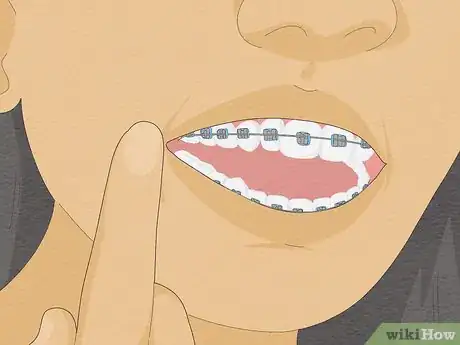
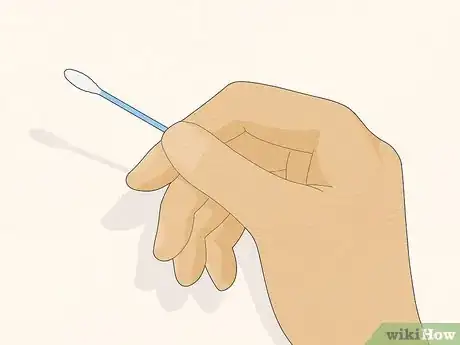
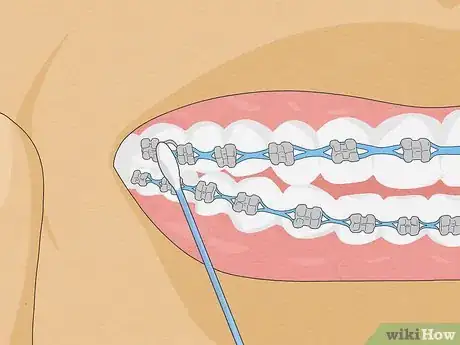
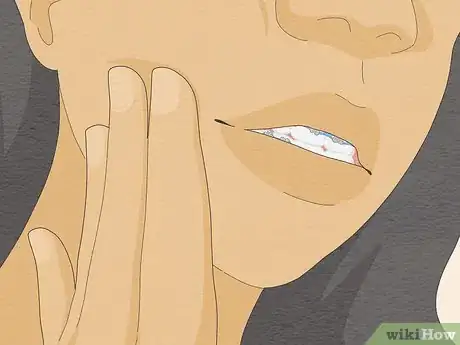
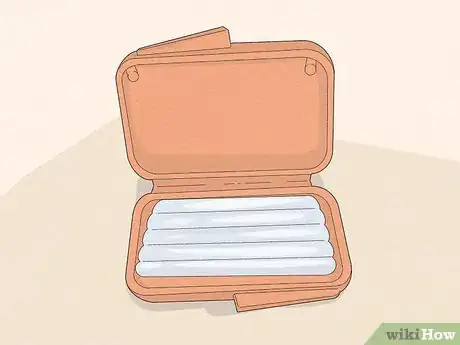
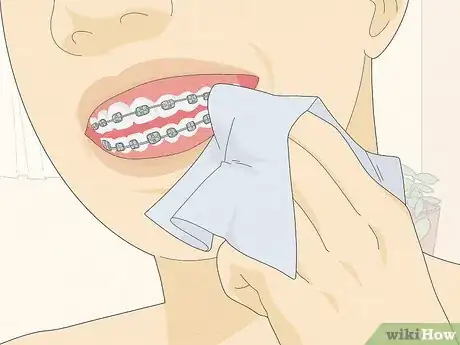
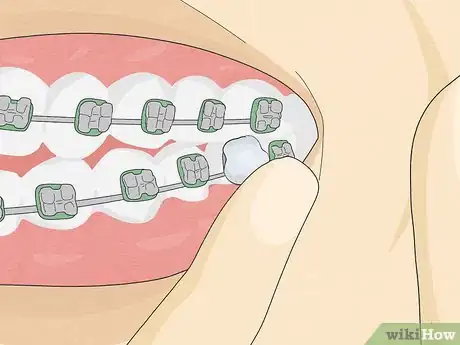
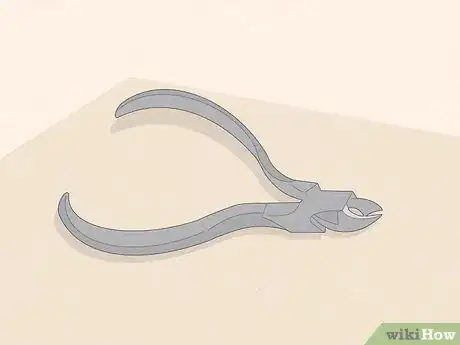
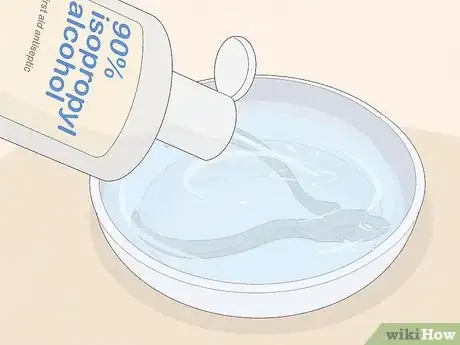
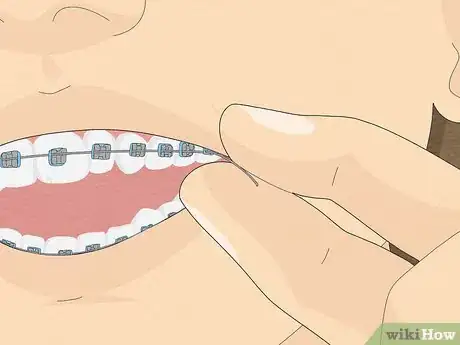
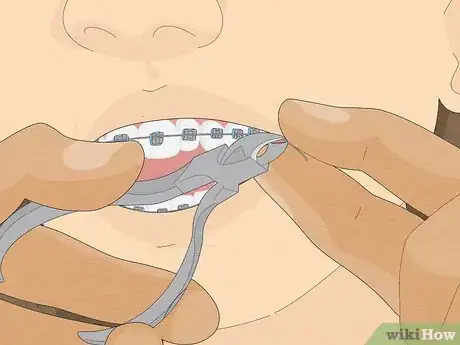


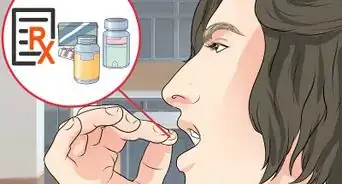

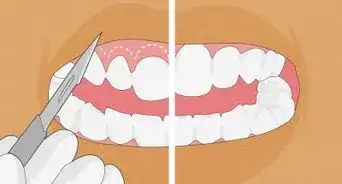
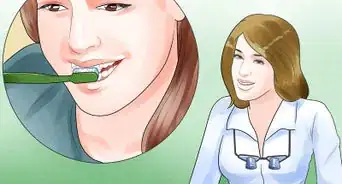
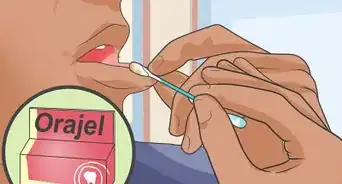

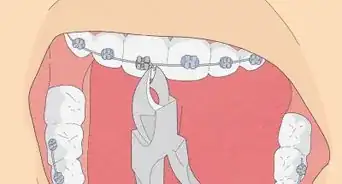
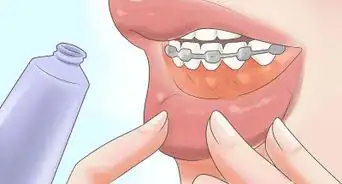
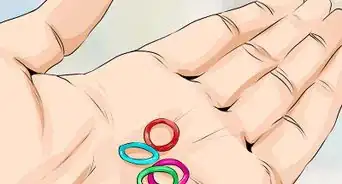

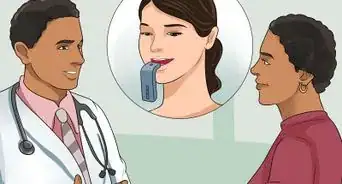









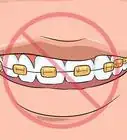







































Medical Disclaimer
The content of this article is not intended to be a substitute for professional medical advice, examination, diagnosis, or treatment. You should always contact your doctor or other qualified healthcare professional before starting, changing, or stopping any kind of health treatment.
Read More...